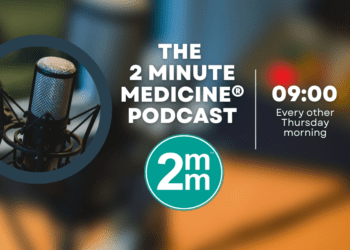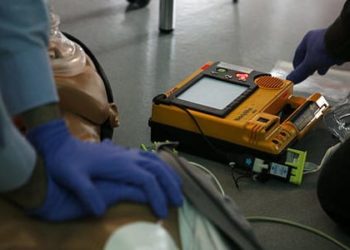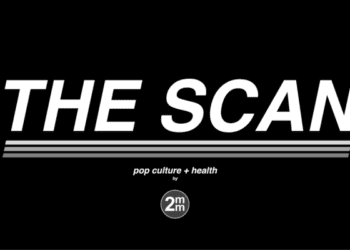Bystander and first-responder initiated CPR associated with improved outcomes
1. In this study, survival at discharge was more likely to occur with bystander-initiated cardiopulmonary resuscitation (CPR) and defibrillation, bystander-initiated CPR and first responder defibrillation, and first responder-initiated CPR and defibrillation, than it was for emergency medical services-initiated CPR and defibrillation.
2. In this study, individuals who received bystander and first-responder initiated CPR were shown to be more likely to achieve sustained return of spontaneous circulation, had an improved survival rate, and demonstrated better neurological outcomes than those who received emergency medical services-initiated CPR.
Evidence Rating Level: 3 (Average)
Study Rundown: Roughly 200 000 out-of-hospital cardiac arrest deaths occur every year in the United States. Before being treated in an ambulance or an emergency department, many individuals experiencing cardiac arrest receive potentially life saving care from those in their immediate vicinity. To promote such efforts, North Carolina instituted the North Carolina Regional Approach to Cardiovascular Emergencies Cardiac Arrest Resuscitation System (RACE-CARS) in 2010. This program trained the community in CPR and AED use and educated dispatch centers in recognizing cardiac arrest symptoms.
This study demonstrated that in between 2010-2013, rates of bystander initiated CPR and AED use increased and were associated with an improvement in health outcomes (survival, neurological status, return of spontaneous circulation) in out-of-hospital cardiac arrest patients. This study was strengthened by its ability to delineate which specific efforts contributed to improved patient survival. However, its conclusions were limited by its observational study design. Due to the success of this program, other states should consider adopting, and tracking, similar programs to increase the odds of out-of-hospital cardiac arrest survival. Community education efforts should continue to emphasize the importance of simple, life saving education programs as well as bystanders taking action in these situations.
Click to read the study, published today in JAMA
Click to read the accompanying editorial in JAMA
Relevant Reading: Multistate implementation of guideline-based cardiac resuscitation systems of care: Description of the HeartRescue Project
In-Depth [retrospective cohort]: This study evaluated 4961 out-of-hospital cardiac arrest patients between 2010-2013 from 11 counties in North Carolina, making up 30% of the state’s population. Approximately 86.3% of patients received CPR before EMS arrival, 45.7% by bystanders and 40.6% by professional first responders. First responders included police officers, firefighters, rescue squads, or a life-saving crew trained in basic CPR. Survival among those who received EMS-initiated CPR and defibrillation was 15.2% (95%CI 10.8%-20.9%); bystander-initiated CPR and defibrillation, 33.6% (95%CI 25.5%-42.9%); bystander-initiated CPR and first-responder defibrillation, 24.2% (95%CI 20.0%-29.0%); and first-responder CPR and defibrillation 25.2% (95%CI 21.4%-29.6%). The number of those discharged alive increased from 3.8 per 100,000 persons (95%CI 3.1-4.6) in 2010 to 5.2 per 100,000 persons (95%CI 4.4- 6.1) in 2013 (p < 0.01).
Image: CC/Wiki
©2015 2 Minute Medicine, Inc. All rights reserved. No works may be reproduced without expressed written consent from 2 Minute Medicine, Inc. Inquire about licensing here. No article should be construed as medical advice and is not intended as such by the authors or by 2 Minute Medicine, Inc.








